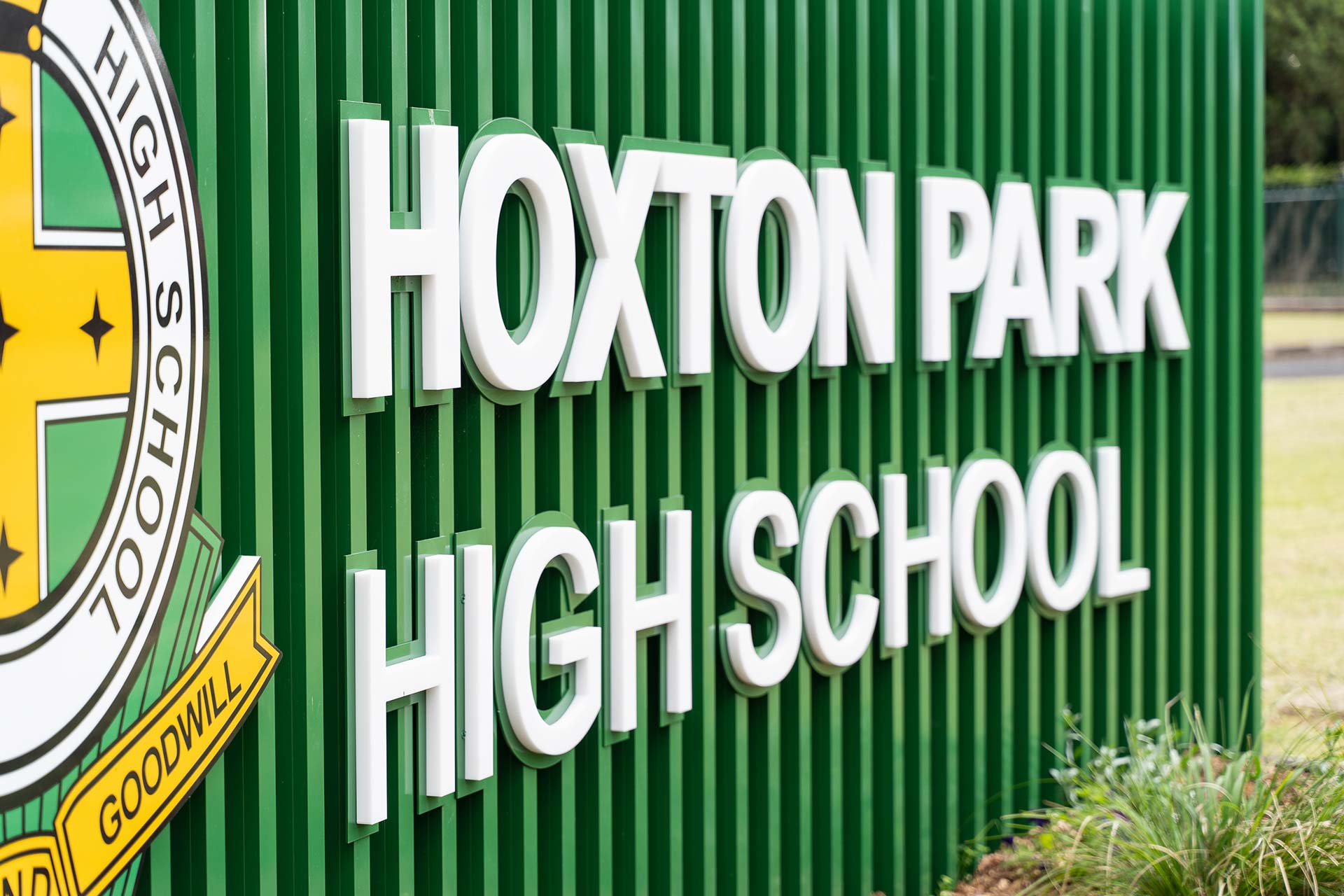Choosing the right material for cut-out lettering signs

Choosing the right Material for Cut-Out or Fabricated Lettering
This guide will help you to make an informed decision about popular cut-out lettering materials.
Aluminium Cut-Out Lettering
Aluminium is well-known for its durability and rigidity despite its thin, lightweight design. Even when used outdoors, it can last for many years without breaking down, failing, or corroding.
Aluminium also offers a classy, professional look, whether it’s a brushed, polished or mirrored finish, and it can be painted to match your brand colours using a 2pac polyurethane. This makes the lettering stand out, and is why you’ll often see it used in professional offices such as law firms, architecture firms, and higher education facilities, etc.
Another reason why aluminium is so popular for cut-out lettering is its affordability. Given the material’s sturdiness, longevity, and customisability, you might expect it to be an expensive option. However, it’s generally considered one of the more affordable materials for signage.
Acrylic Cut-Out Lettering
Acrylic is a durable and versatile plastic material with a sleek finish. It is often used as a cheaper alternative to aluminium or stainless steel. When painted, the appearance is almost indistinguishable to other painted options.
While acrylic lettering can be used outdoors, it is not an ideal option unless it is painted or at least 10mm thick. It isn’t as resilient to extreme weather conditions and can expand or contract with weather changes.
When used at thicknesses less than 10mm, it is quite fragile, making it unsuitable in areas where it is susceptible to vandalism, ball games or high traffic.
Stainless Steel
Stainless steel lettering is durable and can stand up to harsh climates, making it an excellent option for external signage.
One of the best things about stainless steel as a fabricated lettering material is that it is easy to work with, and it can be made in variety of finishes, such as brushed, polished or mirrored.
Stainless steel is obviously one of the more expensive options. However, this can often be justified through the longer lifespan and low maintenance nature of the material.
Aluminium Composite Material (ACM)
ACM consists of a polyethylene (PE) core, usually recycled, sandwiched between two foil-coated aluminium sheets, commonly available in 3mm thickness. The material is durable and considerably lighter compared to aluminium, and it tends to be a more low-cost material compared to the other options in this article.
Available in a large range of colours and finishes including stainless, brushed or mirrored look, ACM panels are suitable for interior and most exterior applications. It’s important to note that since ACM isn’t as solid as some other options, it may not be suitable for use in places that are exposed to harsh conditions or vandalism. ACM can bend and bow in direct sunlight, causing the lettering to become wavy.
When installing ACM, it is usually affixed through the face of the material, meaning the fixings are visible and some might find this unattractive.
Fire-rated ACM is available at an additional cost.
Corten Steel
Corten steel, or weathering steel, is a great option if you are after a rust finish. It’s known for its strength, durability, practicality, and aesthetic appeal. There is a raw, natural beauty to the steel which helps it blend with other natural materials, particularly wood or stone.
The look is achieved through a naturally occurring protective oxidised layer. This also means it requires no painting or ongoing surface treatment. If this layer is scratched and new steel is exposed from underneath, this will quickly oxidise to blend in with the rest of the surface.
Factors to consider when deciding on the material.
Now that we’ve established the general features of each material, the next step is deciding which material will best suit your application. There are some important factors to consider here:
● Thickness (ACM 3mm or 4mm, Stainless Steel 0.5-10mm, Acrylic 1.5-20mm, Aluminium 1.2-10mm)
● Application (the surface material of wall, the physical location etc)
● Fire rating (Fire-rated ACM, stainless steel and Aluminium)
Some materials may be better suited to particular applications so it’s important to take the time to make an informed choice.
Conclusion
Acrylic, aluminium, stainless steel, ACM, and Corten steel all make great cut-out and fabricated lettering signage. Which one you chose will ultimately depend on your requirements.
Are you unsure which option would best suit? Book a discovery appointment with one of our signage experts to discuss your requirements and let us help you make a decision that will benefit you most.

.png)
.jpg)
.jpg)